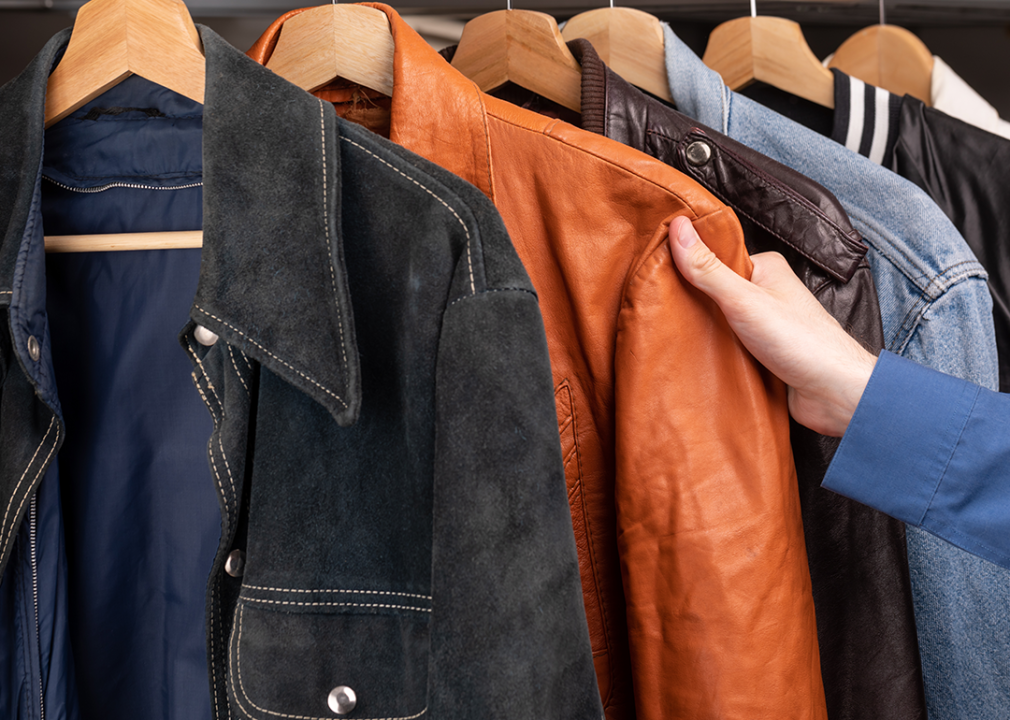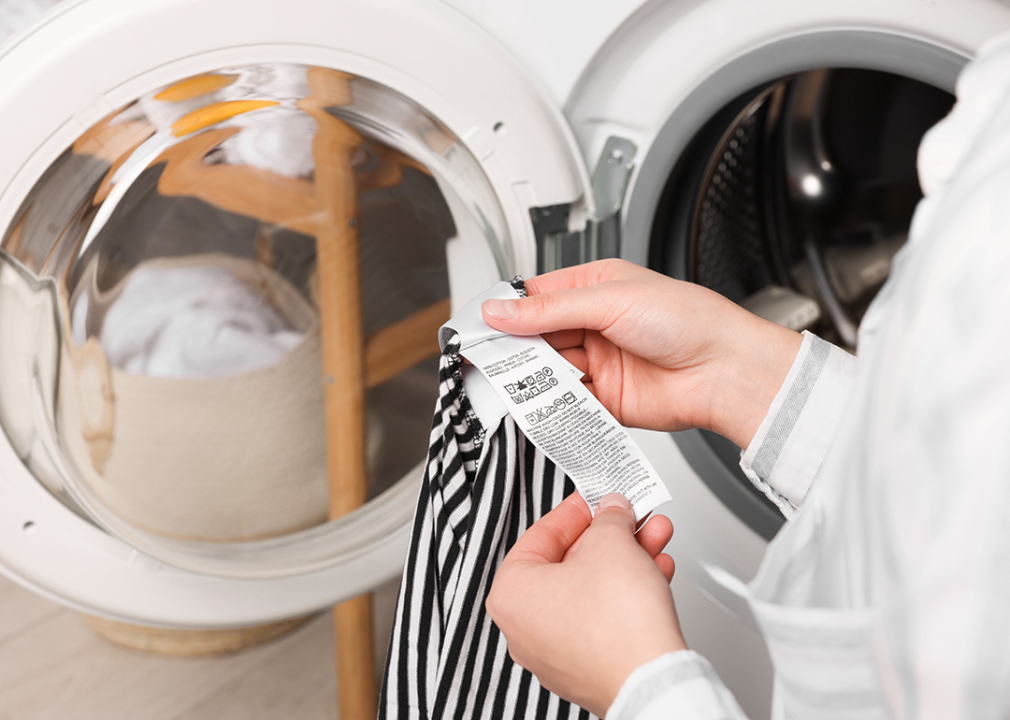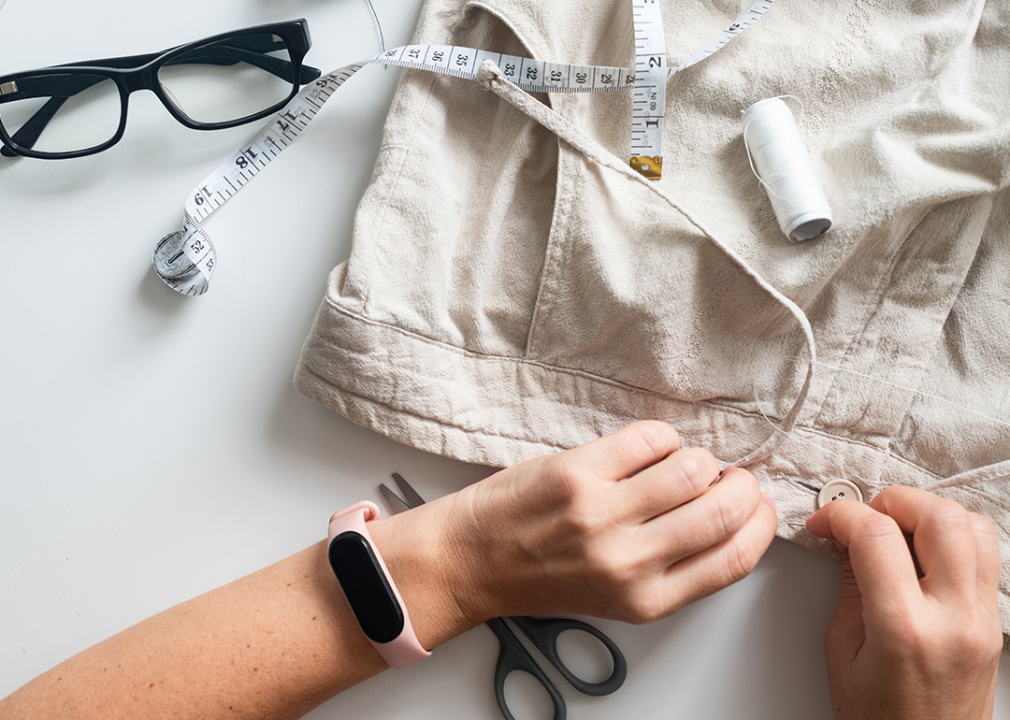5 tips for sustainable fashion that won't hurt the environment or your pocketbook

LightField Studios // Shutterstock
5 tips for sustainable fashion that won’t hurt the environment or your pocketbook
Woman sorting through clothing.
We’ve all seen them: stores and websites that offer a colorful, seemingly endless rotation of every style of clothes at impossibly low prices. Brands like Forever 21, H&M, Uniqlo, and Zara are at the forefront of the rise of “fast fashion,” mass-producing clothes at lightning speed to provide consumers with a constant flow of cheap options.
But fast fashion is wreaking havoc on the environment, causing ecological harm at every stage, from production and shipping to disposal. The UN Alliance for Sustainable Fashion estimates that fast fashion accounts for up to 8% of global carbon dioxide emissions. That’s more than all emissions from international flights and ocean transport combined. Clothing and textile waste—which fast fashion produces en masse—is the fastest-growing category of waste in the country. Globally, more than $100 billion of clothing material is wasted annually, according to a Circular Fibres Initiative analysis.
Along with its environmental harm, fast fashion is a source of widespread human rights abuses. The quick turnaround and high production quantity are only possible due to low pay, long hours, and unhealthy labor conditions for workers, often those in majority world countries. The average worker employed by a fast fashion producer receives only half a living wage, and those numbers drop even lower for women and children. Shein suppliers alone have been reported to mandate 18-hour days with no breaks and pay workers a meager 3 cents per item produced.
Ultimately, the cost of fast fashion is very high, even though the price on the tag is tantalizingly low.
The good news? There’s a way to be fashionable without feeding this harmful system. And you don’t have to overhaul your whole closet to get started either.
The RealReal put together five tips for sustainable fashion that will lower your impact on the environment—and your wallet. From how you buy clothes to how you take care of them and even the thought you put into designing your wardrobe, there are plenty of small lifestyle changes you can make while still having fun with your style.
![]()

Iryna Imago // Shutterstock
Try to avoid buying from fast fashion outlets
Woman shopping in trendy fashion store.
Although their low prices can be tempting, avoiding fast fashion from brands like Shein, Zara, Temu, and Fashion Nova can benefit your budget and the environment. These brands produce hundreds of new styles per week (with Shein topping 1,000), generating massive waste.
Many of these garments are made from polyester, which generates triple the amount of greenhouse gasses to produce compared to cotton and can take up to 200 years to decompose. And that’s not even taking into account shipping: many fast fashion retailers are online-only and depend on worldwide shipping to reach consumers, resulting in harmful greenhouse gas emissions; Shein and Temu send around a combined 600,000 packages to the U.S. daily, according to a June 2023 U.S. Congress report. Once a fast fashion item reaches its destination, its lifecycle is nearly over—on average, it will last no more than 10 wearings.
In short, even though fast fashion might be cheaper to purchase, over the long run, your wallet will thank you for investing in more durable pieces. At the same time, the best way to practice sustainable fashion is to wear the clothes you have, so don’t rush to throw out any fast fashion pieces you may already own. Instead, take good care of them so they’ll last as long as possible.

Dmitry Naumov // Shutterstock
Explore the booming secondhand clothing market
Person looking at jackets in a second hand store.
Shopping secondhand is a great way to give used garments another life, and it’s often much more affordable than buying new. On average, consumers who shop at thrift stores can save around $150 a month, or $1,760 a year. Thrift stores aren’t your only option either. Vintage stores sell unique pieces from decades past, and there is a growing marketplace of online clothing rental services that allow shoppers to rent clothes at a fraction of their purchasing price, wear them, and then return them to be passed onto a new wearer.
When buying a piece of clothing for good, try the 30 Wears Challenge by pausing to consider whether you’d wear the item at least 30 times before you hand over your credit card. Of course, it’s even better to see yourself wearing it forever!
This isn’t to say that you need to exclusively shop secondhand or overhaul your entire wardrobe; if every shopper bought just one used piece of clothing instead of a new one this year, a cut in the production of new clothing could lower CO2 emissions by more than 2 billion pounds and save 23 billion gallons of water.

New Africa // Shutterstock
Prolong your clothes’ lifecycle
Person doing laundry reading clothing label care symbols.
Taking proper care of your clothes extends their lives, meaning you’ll spend less money—and expend less environmental waste—replacing them. Many habits require little effort but can make all the difference in how long your wardrobe lasts, like washing denim inside out, using a steamer instead of an iron, or investing in a fabric shaver for knitted clothes.
The care instructions inside your clothes provide valuable information for proper care, including the best temperatures and cycles for machine washing different fabrics or whether to take the time to wash them by hand. Drying your clothes correctly is also important, as fabric breakdown accounts for 29% of clothes that are thrown away.

vi mart // Shutterstock
When clothes no longer fit, don’t discard them—alter them
Person making alterations to clothes, top view.
We all fluctuate in size throughout our adult lives—but if we threw out our clothes and bought a new wardrobe every time this happened, we’d be harming both our wallets and the environment. Instead, learning some basic sewing skills could save you time and considerable money, while reducing waste.
Another option is to take your clothing to a local tailor. While alterations may seem pricey, they can save you money over the long term and provide a dependable fix to ensure you don’t have to part with your favorite sweater. Increasingly, brands (including Patagonia, MUD Jeans, and Chaco) offer repairs to the items they sell, making them last longer. Even extending your clothes’ life span by just one or two years can decrease your fashion carbon footprint by 24%.

New Africa // Shutterstock
Condense and simplify your wardrobe
Woman choosing clothes from an edited wardrobe.
The average person wears only a fraction of their closet regularly—as little as 10%-20% by some estimates. Put simply, many people own much more clothing than they actually need. Taking a thoughtful look at your wardrobe and narrowing it down to some key, tried-and-true pieces can keep you from splurging on new clothes that you won’t actually wear. For instance, many of us swap out our clothes depending on the season, but investing in pieces you can layer year-round can reduce or eliminate this need.
A capsule wardrobe can be a great approach. The term refers to a minimalist closet filled with a small number of versatile pieces (often around 30) that can be easily mixed and matched to create a variety of outfits. Experts advise taking time to go through your wardrobe and ask yourself if what you own is comfortable, fits your personal style, and pairs well with the rest of your clothing.
Story editing by Mia Nakaji Monnier. Additional editing by Kelly Glass. Copy editing by Paris Close.
This story originally appeared on The RealReal and was produced and
distributed in partnership with Stacker Studio.